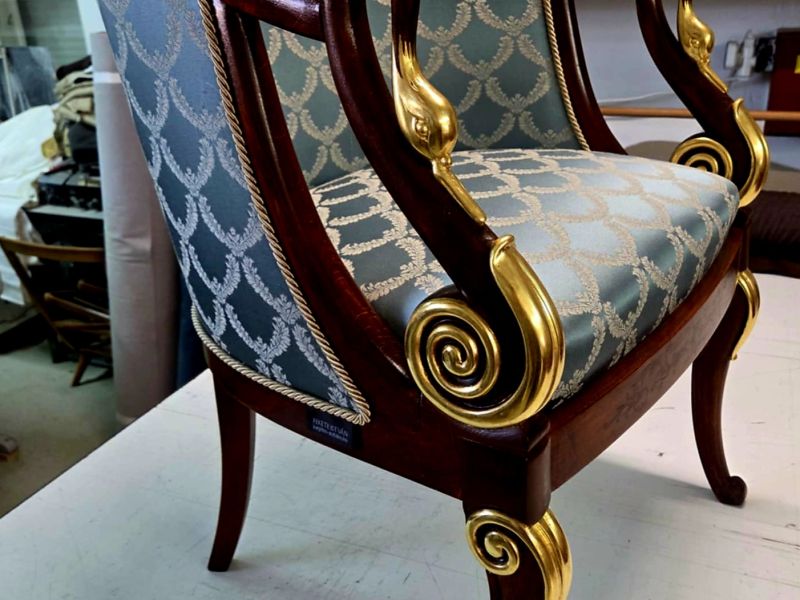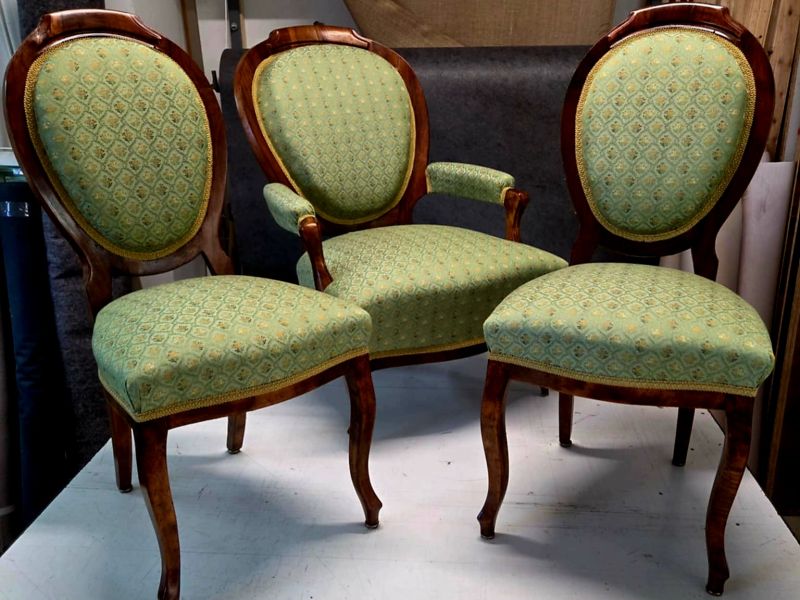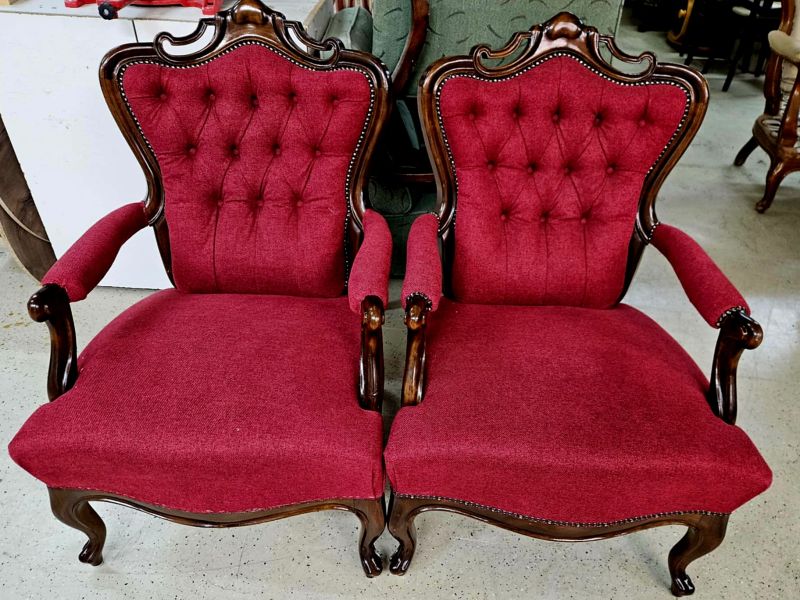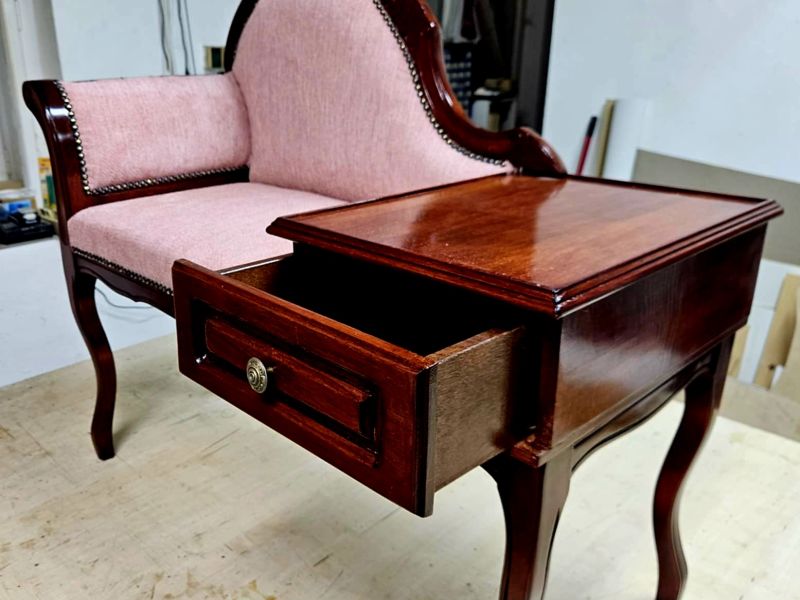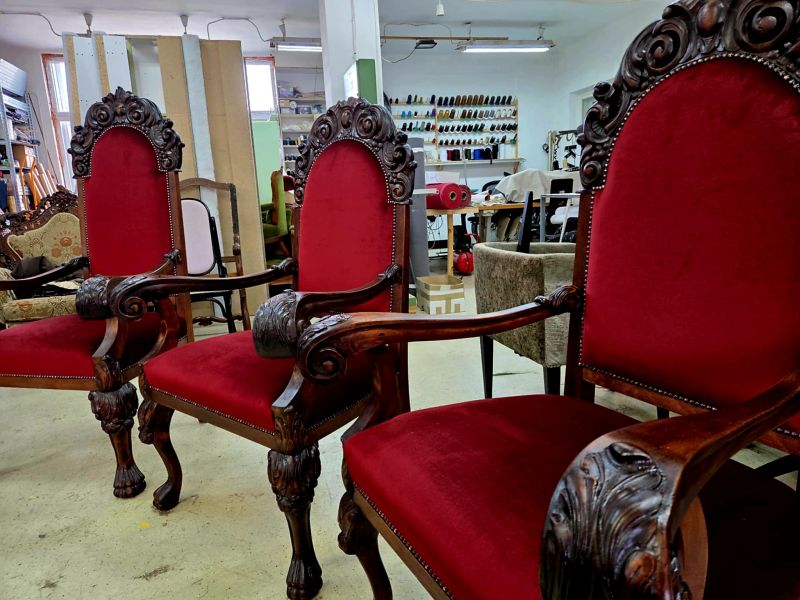Breaking with the overly ornate forms of earlier Rococo and Baroque styles, 19th-century Neoclassical furniture brought the classical purity, proportions, and elegance of ancient Greek and Roman art back into furniture design. This style signaled not only an aesthetic change but also an ideological one: in line with the ideas of the enlightenment, rationality, order, and simplicity were preferred.
Neoclassicism appeared at the end of the 18th century, but it flourished in the first half of the 19th century, especially during the Napoleonic era, when it became known as the Empire style. The main features of 19th-century neoclassical furniture were decorative elements inspired by antique motifs and ancient architecture and art, such as columns, pilasters, lion heads, griffins, laurel wreaths, geometric patterns, vases, and classical mythological figures. In terms of materials, mahogany and other dark exotic woods were primarily used, often decorated with bronze, copper, or gilded metal inlays. Silk, brocade, and damask were used for upholstering seating furniture, often with striped or classical patterns. At the beginning of the 19th century, there were many talented furniture makers who elevated the neoclassical style to a high level.
Among them, Georges Jacob (1739-1814) and his sons stood out. They worked in Paris, France, and were among the most influential figures of the Neoclassical style. They were the official furniture suppliers to Napoleon's court. Charles Percier (1764-1838) and Pierre-François-Léonard Fontaine (1762-1853), although primarily architects and interior designers, also designed the most influential Empire furniture, which greatly shaped contemporary European taste.
The chaise longue, or long chair, is a transitional piece of furniture between a sofa and an armchair, allowing for a comfortable, semi-reclining position. Nineteenth-century neoclassical chaise longues were particularly elegant and often featured animal motifs, especially swan decorations. A characteristic feature of these is the shape of the armrests or legs, which depict the elegantly curved neck and head of a swan. These decorations were often made of bronze or carved and highlighted with gilding. In ancient mythology, the swan was associated with Apollo and Aphrodite and was a symbol of beauty, elegance, and purity, making it a perfect fit for the neoclassical aesthetic. This type of furniture was primarily used by the aristocracy and the wealthy bourgeoisie. They were often placed in salons, boudoirs, libraries, or bedrooms, where they were used for reading, relaxing, or informal conversations.They were particularly popular among women, as they could sit comfortably on them without creasing their clothes. France was the cradle of this style, especially Paris, where orders from the court and the aristocracy ensured its boom. The Empire style also had an impact in England, where it was known as the Regency style. The neoclassical style also spread to Russia, Italy, Germany, Austria, and the United States, but with local characteristics and interpretations.
Such beautifully crafted pieces of furniture are somewhat rare in our workshop. We completely dismantled this graceful swan bed and tried to restore it as much as possible in accordance with the requirements of the period. The wooden parts of the seat were broken and had to be completely reshaped and remolded, as they were so badly damaged. Gluing them back together was a long and time-consuming process, and polishing them required meticulous attention due to the swan's beautifully curved shapes. The upholstery was the customer's perfect choice, a beautiful cherry red silk with gold trim. Unfortunately, I won't be able to take pictures on site, so I'll have to settle for workshop photos, but it's still gorgeous.









